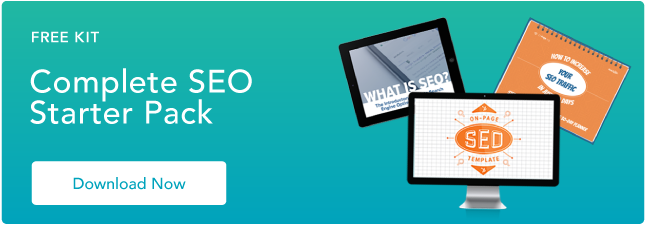SEO copywriting differs from other SEO content writing you may be familiar with, like blogging, as the end goal is to convert leads rather than generate organic traffic. In addition, SEO copywriting is shorter; where a blog post may have almost a thousand words, copywriting content may have less than half of that.
However, the two can go hand in hand. You might create a blog post that includes a CTA created with SEO copywriting principles in mind, and the words entice users to click on what you’re offering to learn more, like downloading a free ebook or another related source.
Here are some examples of content types that may be created with SEO copywriting principles in mind:
- Final checkout screens
- Product descriptions
- On-site navigation instructions
- Advertising content
- Website copy
- Brand messaging
- CTA buttons
- Landing pages
As with all types of SEO, it’s important to understand best practices.
SEO Copywriting Tips and Best Practices
Strong copywriting is a combination of a variety of factors, which we’ll discuss below.
Know your audience.
The first step to successful copywriting is knowing your audience. Without this information, it will be impossible to compel them with your writing as you don’t know who they are or how to appeal to them.
Finding your audience for SEO copywriting follows the same processes you would when creating a targeted marketing campaign, or any type of content you would create for your business: buyer persona research.
Buyer personas are fictional representations of what your ideal customer looks like based on market research and your existing business data and customer profiles. HubSpot’s Make My Persona tool can help with this, as it will guide you through a step-by-step process of outlining who they are, discovering their main pain points, and the solutions they look for based on their needs.
Conduct keyword research.
Keyword research is a critical component of any SEO strategy.
As a refresher, keyword research is the process of uncovering the words your target audience uses when searching for products and services similar to what you offer, and using the keywords in your content to attract those same users to your site.
For copywriting, this research is essential because it helps you uncover user intent behind the keywords your audience searches for so you can write copy that resonates with their needs.
Write for your audience.
The goal of copywriting is to entice your audience to take action. So, as mentioned above, it’s important to always write with your audience in mind. Your buyers are looking for solutions, so you’re writing to tell them why you’re a solution.
For example, say you offer an all-in-one marketing tool. Your persona and keyword research lets you know that your target audience often queries “easy-to-use marketing tools.” You’d want to incorporate that search term into your copy to speak directly to user intent in the hopes that they’ll follow through with the desired action (purchasing your product) because you’ve convinced them that you’re the best fit solution to their needs.
Use intent-relevant action words.
Just as it’s essential to write for your audience's intent, it’s also important to use intent-relevant action words. You want your copy to let them know why what you have to offer is the best solution, and then lead them to the action you want them to take.
This simply means that you want your copy to draw your audience to make a final decision, maybe by saying something like “Buy Now” or “Sign Up Here,” at the end of your product descriptions.
Be concise and straightforward.
The harder your copy is to read, the less likely it is that you’ll achieve your ultimate goal of converting users. If they have to put in a significant amount of effort to understand what you have to offer, you’ll likely lose them along the way.
This means avoiding jargon and wordiness and only including what is most relevant to what you’re creating copy for. This can be a difficult skill to develop, so it can be helpful to consider what you would and wouldn’t like to see when browsing for solutions to your pain points and model your strategy off of that.
If I were to take this tip to mind and listen to my own advice while writing this section, I would simply say this: leave no room for confusion or misunderstandings; be straightforward.
Continuous testing.
Something that you may have thought would perform well may not be as aligned with audience intent as you thought, and continuous testing allows you to iterate on what you create to ensure that you satisfy consumer needs.
Testing also ensures that you’re maximizing your effectiveness. Your copy should help your audience seamlessly come to the solutions you’re providing without putting in extra effort because your copy already explains it all.
An example of continuous testing can be creating multiple versions of CTA’s, each with different copy, that you place on different website pages to see which drives better results.
All-in-all, SEO copywriting comes together like this: the SEO aspect are the keywords you know align with your audience user intent and already have high traffic, and the copywriting element is writing for the user intent behind the keywords that have traffic.
When you utilize this strategy, you’re directly showing your audience how you’ll solve their pain points and entice them to become a customer.
SEO





.png)




.jpg)
![The Future of Google: Web Strategists Predict How AI Overviews & Other Search Changes Will Impact Traffic [New Data]](https://53.fs1.hubspotusercontent-na1.net/hubfs/53/seo-sge-1-20241031-8247348.webp)
